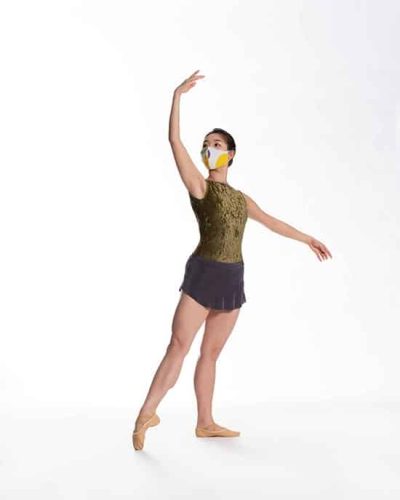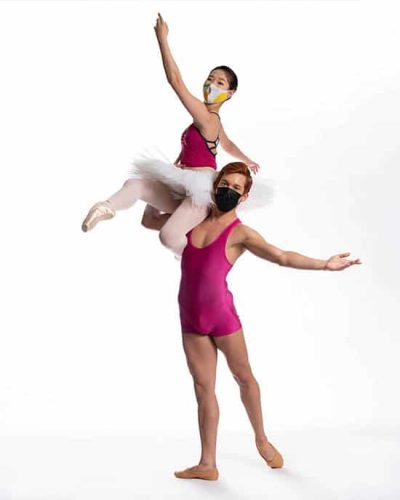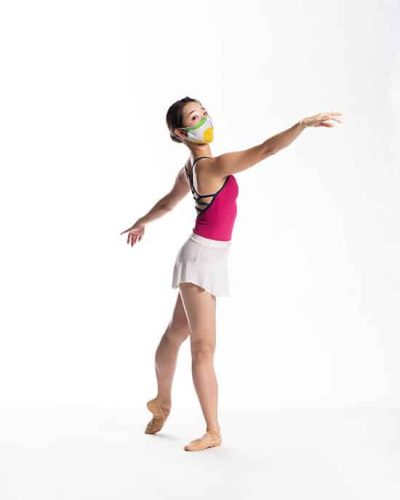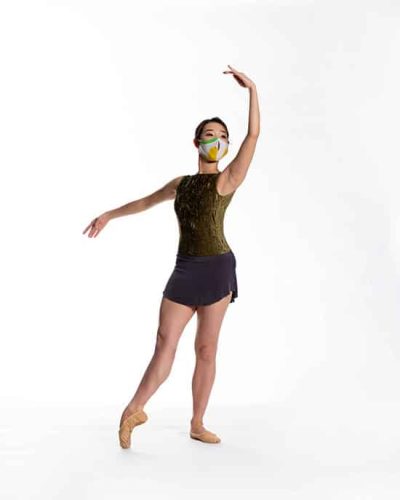Écarté – A diagonal position
A position where the dancer stands on a diagonal with the working leg extended either on the floor or in the air.

Échappé – An opening of both feet from a closed to an open position
From the French “Échapper” meaning “to escape” this movement is as if the two legs escape away from one another outwards. The movement can be done either as a jump or onto demi or full pointe, finishing in an open second or fourth position with the legs.Effacé – An open facing where the legs are not crossed from the view of the audience
Also called “ouvert” (meaning open), effacé is a pose in which the legs are open from the perspective of the audience, as opposed to a crossed position like croisé.

Élancer – Meaning “to dash” or “to dart”
One of the *Seven Movements of Dance, the verb élancer indicates that a step is done quickly and suddenly; in a darting manner.
Emboîté – A step which alternates from foot to foot, and can be done as a jump or en pointe
From the French, meaning “fit together,” emboîté requires the legs to transfer weight between them, passing as tightly to one another as possible. (See below)
Emboîté en avant or en arriere
Small, continuous, tight walking steps forward or backward with the leg brushing out to the side and then closing in the opposite of its starting position. The legs stay straight.Emboîté en tournant (en pointe or en demi-pointe)
A series of turning steps, transferring feet and hitting the position.Emboîté sauté (emboité en tournant)
A series of turning jumps with the legs passing through cou de pied and switching from one foot to the other.
Emboîté sauté in attitude
A series of jumps with the legs switching through, and landing in attitude.Entrechat – Jumps where the legs cross and beat against one another in a weaving motion
Meaning interweaving or braiding, there are even numbered entrechats (quatre (4), six (6), etc.) which land on two feet, and odd numbered entrechats (trois (3) or cinq (5)) which land on one foot. (See below)
Entrechat Trois (Called Royale in the French School)
Royale (Called Entrechat Trois in the French School)
See below
Entrechat Quatre
Entrechat Cinq
Entrechat Six
Entrechat Sept
Entrechat Huit
Enveloppé – The action of wrapping around the supporting leg inward from an open position
Meaning enveloped, a movement in which the working foot comes into the supporting leg from an open position. Often thought of as the opposite of développé but can also be used to describe a straight leg wrapping around the supporting leg into a turn for instance.
Épaulement – A shoulder movement
A movement of the shoulders, spiraling through the torso from the waist upwards, making the shoulders move forward and back.
Étentre – Meaning “to stretch,” the verb from which the term “tendu” is derived
The idea that the leg is lengthening and extending away from the centre of the body. The knee, the ankle, and the foot are stretched to create the longest possible line. One of the Seven Movements of Dance*

